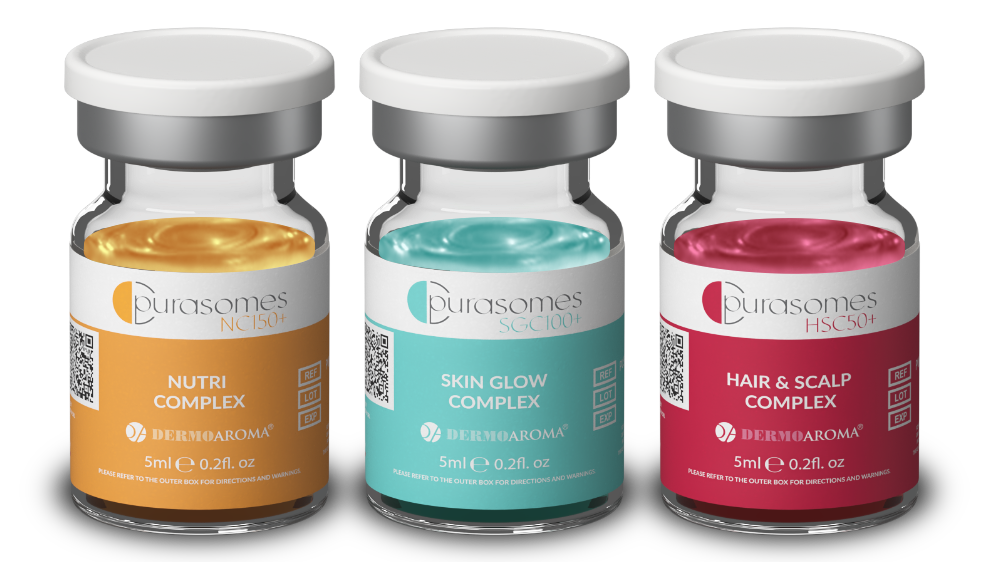EXOSOMES
What are Exosomes?
Exosomes are extracellular vesicles naturally produced by nearly every cell in the body, they serve as crucial agents in intercellular communication.
These tiny sacs, with a lipid casing, enable the transfer of signalling molecules like proteins and genetic material between cells, thereby influencing biological processes. By identifying cells in need of repair, they initiate and promote the repair process.
What to expect
Exosomes produce results that make people say “you look really well" rather than "what procedures have you had done?" They enhance the skin's appearance by revealing a fresher, brighter, and smoother complexion, addressing issues such as uneven tone and texture, acne scars, enlarged pores, and wrinkles. By stimulating the natural repair mechanisms of skin cells, exosomes stimulate increased collagen and elastin production, trigger wound healing, and reduce irregular pigment production.
LEARN MORE
-
Not exactly. Although both exosomes and stem cells are known for their skin rejuvenating properties, exosomes differ in that they are not living cells (lacking a nucleus) and can be obtained from various sources. Similarly, liposomes, which aid in delivering ingredients into the skin via encapsulation, are simpler structures capable of containing either water-loving or water-hating ingredients.
-
Animal-derived: Derived from colostrum, the initial milk produced by cattle, bovine-derived exosomes are gaining traction in aesthetics as a viable alternative to human sources. However, the process of obtaining animal-derived exosomes may compromise vital ingredients such as vitamins and growth factors, necessitating their supplementation. Concerns also exist regarding the potential for cross-contamination of animal-to-human DNA.
Plant-derived: Recognized as the legally acceptable form of exosomes in the UK, plant-derived exosomes are often sourced from roses. However, human cell signaling is more intricate compared to plants, necessitating the combination of multiple plant sources for optimal results. Recent studies suggest that absorption of plant-derived exosomes could be superior to other sources.
-
Most recent research on exosomes has been conducted in countries like Korea, where the use of human-derived exosomes is legal. These exosomes are purportedly the most potent, yielding superior results.
However, they also pose ethical concerns due to regulations in the UK regarding human-derived ingredients and the potential risk of DNA contamination. The legality of using human-derived exosomes for skin rejuvenation in the UK is subject to debate. While some practitioners argue that topical application of exosomes is permissible, concerns arise when exosomes are used topically in conjunction with procedures like micro-needling, designed to enhance skincare penetration. Moreover, under UK and European regulations, the use of human-derived ingredients is strictly prohibited, rendering the use of human-derived exosomes illegal, even for topical applications. The ambiguity surrounding this issue underscores the importance of careful consideration before undergoing such treatments.
-
As exosomes work to stimulate the skin's natural repair processes, noticeable results are not immediate. The most significant improvements can be typically seen at 3-6 weeks post-treatment, attributable to increased collagen and elastin production. However, their anti-inflammatory properties can swiftly reduce the downtime associated with other cosmetic treatments!
-
They are applied using an electronic microneedling device, with minimal downtime and very comfortable, topical numbing cream can be applied prior if required.
-
Research suggests that exosomes are to remain active in the skin for up to six to eight months post treatment, contributing to continued improvements in skin quality.
TREATMENT FAQs
-

Price
From £160
-

Pain
Minimal as topical anaesthetic is applied prior to treatment
-

Recovery Time
24 hours downtime
-

Results
As exosomes work to stimulate the skin's natural repair processes, noticeable results are not immediate. The most significant improvements can be typically seen at 3-6 weeks post-treatment.


